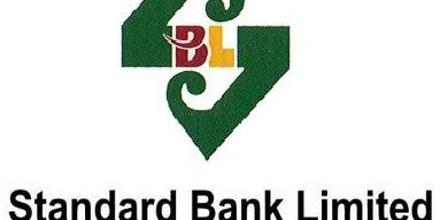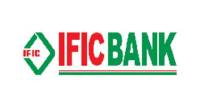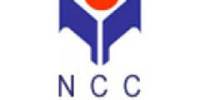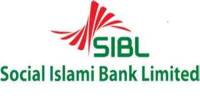Foreign Exchange Performance and Bank’s Profitability:
an Evaluation of Standard Bank Limited
Banks are important financial institutions, which play a vital role in the economy of a country. It deals with credit i.e., accepts deposit from the public and advances various loans. The system of banking is very ancient. It was prevalent in India, Greece and Rome. Now-a-days, the banks try to give priority in the perspective of our national interest.
Banks are investment intermediaries linking the savers and users of fund. Individuals having surplus funds can lend them for reasonable return. Entrepreneurs who need funds can take the advantage of economically and financially viable investment opportunities. As a result, both the borrowers and lenders are better off than they would have been without financial institutions and market intermediaries, Thus, these financial institutions, such as banks, have a positive role in financing and investment which is a multidimensional process involving the complexity of many interrelated and interdependent factors of diversified nature.
The key to successful banking lays in the ability of balance many activities at the same time. The bank must maintain a healthy growth rate, while at the same time it must take action to minimize the risks it faces. The bank must also keep up enough cash on hand to meet obligations. All of these are related to sound performance of a bank. The financial performance evaluation demonstrates the strengths and weakness of bank performance over time. The Standard Bank Ltd. has a responsibility to ensure efficient and effective banking operation in a sound manner.
The study will look at the amount of liquidity that SBL has available to meet any reasonable demands that might have to meet, how it manages asset/liability, Foreign exchange Operation, what is the position in terms of profitability and how the bank manages its capital so that it has sufficient funds to remain solvent. This study is an attempt to the in-depth analysis of the Foreign Exchange performance of the Standard Bank Limited.
History of SBL
Standard Bank Limited (SBL) is one of the largest public-sector commercial bank in Bangladesh, with years of experience. Adaptation of modern technology both in terms of equipment and banking practice ensures efficient service to clients. Standard Bank Limited is a bank that serves both clients and country.
Standard Bank Limited was incorporated as a Public Limited Company on May11, 1999 with 20 crore paid up capital under the Companies Act, 1994 and it achieved satisfactory progress from its commercial operations since June 03, 1999. SBL witnessed record achievement in its business performance during the year 2011. SBL introduced several attractive products and services and extended loans and credits to different sectors of the economy. Besides, the bank has already introduced real time on-line banking and it is now fully automated. Through all these myriad activities, SBL has created a positive impact in the banking sector of the country.
Bank’s Authorized Capital is now Tk. 1500.00 crore. The Paid-up Capital of the bank has stood at Tk. 570.21 crore and the Statutory Reserve stood at Tk. 291.15 crore as on 31 December, 2013. The total equity capital & reserve of the Bank at the end of the 2013 was Tk. 921.48 crore.
In future Bank has a plan to enhance both the authorized capital & paid-up capital of the Bank to cope with financial growth and regulatory constraint. It has 91 branches all over in Bangladesh.
Products and Services Offered By SBL
Standard Bank Limited has a variety of products offered for the retail customers as well as for corporate clients. The different products and services for retail and corporate clients are given below:
Products for retail clients:
Product for retail clients are:
- Current Deposit Scheme.
- Savings Deposit Scheme.
- Short Term Deposit Scheme.
- Fixed Deposit (FDR)
- SBL Regular Deposit Program (SRDP)
- SBL Regular Income Program (SRIP)
- SBL Double Income Plus (DI+) program
Services for retail Clients:
Services include the following:
- Sale of Bangladesh Sanchaya Patra, ICB Certificate etc.
- Encashment of different Sanchaya Patra, ICB Certificate etc.
- Products for corporate clients:
- SBL offers products for its corporate clients are:
- Payment Against Document (PAD).
- Loan against Trust Receipt (LTR).
- Acceptance against ULC.
- Local Bill Purchase Documentary (LBPD).
- Foreign Bill Purchase Documentary (FBPD).
- Sight Letter of Credit (SLC).
- Usuance Letter of Credit (ULC).
- Letter of Guarantee (LG).
- Secured Overdraft (SOD).
- Demand Loan.
- Time Loan.
- Term Loan.
- SME Loan.
- Agriculture Loan.
Project Description
Summary
Foreign exchange operation is one of the significant functions of the bank. It plays a vital role in overall economy of the country. Through import, export and foreign remittances Foreign Exchange department of the banks earns their profit. Banks are the intermediary of all import, export and remittance activities. Import sector is the most profitable sector in foreign exchange department of SBL. The import earning sectors are- commission for L/C opening, Amendment of local L/C Service charges, Collection of credit report of the beneficiary. From commission for L/C opening and service charge, import department earns most. The export department deals with export L/C, Amendment of L/C, Transfer of L/C, EXP issue charge. When the L/C amounts have to be changed, then the amendments of L/C are needed. The expense sectors of export are – Courier/mailing cost, Stationary cost, Printing cost, Salary of the employee. But here to analyze the actual earning of export, I’ve to find out the total expenses to operate export department. The expense of export, import, and remittance is almost the same. Foreign Exchange Market allows currencies to be exchanged to facilitate international trade and financial transactions. After passing a lot of phases, present foreign exchange market has established and performing to benefit all the parties incorporated here. There are basically three players in the foreign exchange market of Bangladesh. Those are the Bangladesh Bank, authorized dealers, and customers. This paper discussed regarding the related issues of foreign exchange activities of Standard Bank Limited.
The objective of the study may be viewed as:
- To present an over view of The Standard Bank Limited.
- To analyze the Foreign Exchange Transaction procedures maintained by the SBL.
- To know the regulation and deregulation regarding Foreign Exchange in Bangladesh.
- To analyze the import, export and foreign remittance procedure maintained by Standard Bank Limited.
- To gain the depth knowledge of import and export portfolio of the Bank.
- To know overall activities of the Foreign Exchange division.
- To evaluate the success of Foreign Exchange operation.
- To know about the various documents and procedures which are used in banking services of International Trade.
Methodology
Methods followed to perform a job or conducting activities to complete a task is called methodology. In conducting this study the following methodology was adopted in collecting data and information, preparation of reports etc. The methodology of report is given below.
Research Type: This is a Descriptive Research, which briefly reveals the overall foreign exchange performance of Standard Bank limited.
Sources of Data
To prepare this report all the necessary information collected from …
Secondary sources
Annual Reports of Standard Bank limited, 2010, 2011, 2012, & 2013 other published documents of the, Standard Bank’s Website.
Foreign Exchange Operations
Foreign Exchange
One of the largest businesses carried out by the commercial bank is foreign trading. The trade among various countries falls for close link between the parties dealing in trade. The situation calls for expertise in the field of foreign operations. The bank, which provides such operation, is referred to as rending international banking operation. Foreign exchange covers all business activities relating to import, export, inward and outward remittance and buying and selling of currency. International trade demands a flow of goods from seller to buyer and of payment from buyer to seller. In this case the bank plays a vital role to bridge between the buyer and seller.
In order to conduct foreign Exchange operation systematically and methodically the Foreign Exchange Regulation (FER) Act, 1947 enacted on the 11th march 1947 in the British –India provides the legal basis for regulating receipts and payments and dealings in the foreign exchange and securities. Basic regulations for conducting Foreign exchange Operation are issued by the Government as well as by the Bangladesh Bank in the form of Public Notice, circulars etc.
From time to time Authorized Dealers (Ads) in Foreign Exchange should meticulously follow the said circulars and guidelines of Bangladesh Bank.
In Standard Bank Limited (Mohakhali Branch) foreign exchange division has one part which is foreign trade.
Foreign Exchange Trend at Standard Bank Limited
The International Division of Standard Bank Ltd. which is located at the Head Office, Tapa Complex, Bijoynagar is the central place of all international transaction that is conducted through the various branches of the bank. Total 18 branches of Standard Bank Ltd. have the license to perform international trade functions. Each of this AD branches have foreign exchange department whose sole purpose is to carry out the cross border transaction demanded by the customers.
The functions of such Foreign Exchange Department can be divided into three sections:
(a) Import Section
(b) Export Section, and
(c) The Foreign Remittance Section
Here is a brief description of the functions:
a) Import Section
This section deals with the import of foreign commodities into Bangladesh. To import, a person should be competent to be an importer. According to Import and Export Control Act, 1950, the Office of Chief Controller of Import and Export provides the registration (IRC) to the importer. Import starts with the opening of an L/C till the payments are made to the foreign exporters. The import section is in turn is divided into two divisions. One division looks after Sight L/C and another one looks after Back to Back L/C. The Basic difference between these two types of L/C is that, sight L/C requires at sight payment for the imported items, the buyer should pay within three days of documents arrival. And on the other hand, the issuance period for Back to Back credit can range from two months to even a year depending on the L/C terms.
b) Export Section
All Export departments of Standard Bank’s branches are equipped with facilities that would help an exporter ship their good beyond the nation’s boundary, thus earning foreign currency for the country. And majority of such customers for Standard Bank Ltd are involved in the Ready Made Garment sector with only a few exporting other different commodities. Bangladesh exports most of its readymade garments products to U.S.A and European Community (EC) countries. Bangladesh exports about 40% of its readymade garments products to U.S.A.
c) Foreign Remittance Section
Foreign remittance can be stated as the purchase and sale of freely convertible foreign currency as admissible under Exchange Control Regulations of the country. Inward remittance is the purchase and outward remittance is the sale of foreign currency. Later this section will be discussed.
Regulation for Foreign Exchange Division
Foreign Exchange transactions are being controlled by the following rules and regulations.
Local Regulations:
- Foreign exchange act 1047,
- Bangladesh Bank issues Foreign Exchange Circular from time to time to control the export, import and remittance operation.
- Ministers of commerce issues export and import policies giving basic formalities for import and export.
- Sometimes CCI issues public notices for any kind of change in Foreign Exchange transaction.
- Bangladesh Bank publishes two volumes in 1996. These comprise the complete instructions to be followed by the authorized dealers in transactions related to Foreign Exchange.
Letter of Credit
Letter of Credit (L/C) is a credit contract whereby the buyer’s bank is committed (on behalf of the buyer) to place an agreed amount of money at the seller’s disposal under some agreed conditions.
Since the agreed condition include amongst other things, the presentation of some specified documents, the letter of credit is called Documentary Letter of Credit.
The Uniform and practices for Documentary credit published by International Chamber of Commerce (1993) Revision, publication no 500 defines Documentary Credit:
“Any arrangement, however named or described, where by the bank (issuing bank) acting at the request and on the instructions of a customer (the applicant) or its own behalf.”
- Is to make a payment to or the order of a third party (the beneficiary) or is to accept and pay bills of exchange drawn by the beneficiary.
- Authorizes another bank to effect such payment.
- Authorizes another bank to negotiate against stipulated documents provided that the terms and conditions are compiled with.
Types of Letter of Credit (L/C)
Letter of Credit basically divided into two types.
- Revocable L/C
- Irrevocable L/C
Revocable L/C
Revocable L/C is a credit which can be cancelled by issuing bank, without any prior notice to the seller. Here the buyer’s maximum flexibility is maintained as this kind of L/C can be amended at any time up to the moment of payment. In modern banking system the existence of this kind of L/C is not that much widespread.
Irrevocable L/C
An irrevocable credit is a documentary credit, which cannot be revoked, varied or changed/amended or cancelled without the consent of all parties- buyer (Applicant), seller (Beneficiary), Issuing Bank, and Confirming Bank (in case of confirmed Letter of Credit). Irrevocable Credit gives the seller greater assurance of payments, but he/she remains dependent on an undertaking of a foreign bank. In the issuance of Irrevocable Letter of Credit both the Issuing and Conforming Bank have some liability.
Some other kinds of L/C are:
- Revolving Letter of Credit,
- Standby Letter of Credit,
- Red clause Letter of Credit,
- Transferable Letter of Credit,
- Negotiable Letter of Credit,
- Sight Payment Letter of Credit,
- Deferred payment Letter of Credit,
Revolving Letter of Credit
The term revolving L/C is used in that kind of L/C where the goods are delivered in installment at specified intervals. The amount available at any one time is equivalent to the value of one partial delivery.
A revolving credit can be cumulative or non-cumulative means that amount from unused or incompletely used portions can be carried forward to subsequent period.
Standby Letter of Credit
Standby credits are available mostly in the USA. Under the laws of most US states, banks are prohibited from issuing regular quarantines, so credits are used instead of those. In Europe the use of this type of credit is increasing by virtue of their documentary credit, stand-by credits are governed by the UCP.
Red clause Letter of Credit
In these kinds of Letter of Credit the seller or beneficiary can get an advance agreed amount of money from the correspondent bank, against the goods that are going to be delivered under the documentary credit. The beneficiary has to give a receipt and a written undertaking on receiving the advances to present the required documents before the credit terminates.
The using bank takes the responsibility of the credited amount but the advance is paid to the correspondent bank. If the beneficiary fails to present the required documents and to refund the advance, the correspondent bank credits the issuing bank not only with the credited amount but also with the interest amount. The issuing bank, in turn, has reveres to the applicant, who therefore bears the risk for the advance and the interest accursed.
Transferable Letter of Credit
Transferable Letter of Credits is well accepted in the international trade. A trader who receives payments in the form of a transferable documentary credit from a buyer can use that credit to pay his own suppliers. The buyer supplies for an irrecoverable credit issued in the traders favor. The irrecoverable credit must be authorized as transferable by the issuing bank.
After getting the confirmation of credit the trader can request his bank to transfer the credit to his supplier. The bank cannot affect the transfer except it is particularly approved to so. The costs of the transfer are usually charged to the trader and the transferring bank is entitled to delete them in advance.
Negotiation Letter of Credit
Here the term Negotiation means the purchase and sale of bill of exchange or other marketable securities. It is a commercial letter of credit opened by the issuing bank in the currency of its own country and is addressed directly to the beneficiary. This letter is directly delivered to the addressee by a correspondent bank.
This kind of letter of credit allows the beneficiary to draw a bill of exchange on the using bank, on any other named drawer or on the applicant for the credit. The beneficiary can then present this bill to a bank for negotiation, together with the original letter of credit and the documents fixed therein.
Payment of the bill of exchange is guaranteed by the issuing bank on the condition that the documents presented by the beneficiary are in order. The most common form of negotiation credit permits negotiation by any bank. In rare case the choice is limited to specified banks.
Sight Payment Letter of Credit
This type of letter is most commonly in today’s business world. After receiving all the documents sent by the seller, if the buyer finds everything is alright then he gives the permission to his bank to pay the money to the seller at once (may be within 5 working days). But the banks are allowed to take reasonable time to examine the documents if they want.
Deferred Payment Letter of Credit :
Under a deferred payment credit the beneficiary does not receive payment when his presents the documents but at a later date specified in the credit. On presenting the required documents, he receives the authorized banks written undertaking to make payment of maturity. In this way the importer gains possession of the documents before being debited for the amount involved. In this type of L/C process the seller receives an interest for the enhanced time period.
Some terms in Foreign Exchange
Parties involved in L/C operations
- The Applicant: The importer at whose request a letter of credit is issued is known as the applicant or buyer. The letter of credit is opened by the opening bank, on the strength of the contract he makes with the exporter, for the purchase of some goods. Applicant must be the client of the issuing bank.
- The Beneficiary/ Exporter/ Seller: The exporter in whose favor the credit is opened and to whom the letter of credit is addressed is known as the beneficiary. As the seller of goods he is entitled to receive payment which he does by drawing bills under the letter of credit (L/C). As soon as he has shipped the goods and has collected the required documents, he draws a set of papers and presents it with the documents to the opening bank or some other bank mentioned in the L/C. After checking all those papers if the opening bank found everything is ok then, the bank goes for further processing.
- The Issuing Bank: The bank that issues or opens Letter of credit on behalf of the importer is known as the issuing bank. It is also known as the importer’s buying bank.
- The Confirming Bank: The confirming bank is a bank that at the request of issuing bank adds its confirmation to the credit. It could be the advising bank or may not be.
- The Advising Bank: The advising bank acts as an agent of the issuing bank, to advise L/C to the exporter or beneficiary. It is a bank situated in the exporter’s country the issuing bank it may be a branch of the opening bank or a correspondent bank. It may also assume the role of confirming bank and /or negotiating bank depending upon the conditions of the credit.
- Reimbursing Bank: It is a bank acting as an agent of the issuing bank, authorized to make payment or to honor reimbursing claim of the negotiating bank.
- Negotiating Bank: This bank provides value to the beneficiary against presentation of documents complying credits terms. Usually this is the exporter’s bank that purchases the export documents.
- The Notify Party: The party to whom the arrival of shipment has to be notified or to be informed is called the Notify Party.
Export Incentives
Financial Incentives
- Restructuring of Export Credit Guarantee Scheme;
- Expansion of export credit period from 180 days to 270 days;
- 50% tax rebate on export earnings Duty draw back;
- Bonded warehouse facilities to 100% export oriented firms;
- Duty free import of capital equipment for 100% export oriented firms;
General Incentives
- National Export Trophy to successful exporters;
- Training course on external trade;
- Arrangement of international trade fairs, commodity-based exhibitions in the country and participation in foreign trade fairs;
Other Incentives
- Assistance in improvement of quality and packaging of exportable items;
- Export Procedures
There are a number of formalities, which an exporter has to fulfill before and after shipment of goods. These formalities or procedures are enumerated as follows, –
Obtaining Export Registration Certificate (ERC)
No exporter is allowed to export any commodity permissible for export from Bangladesh unless he is registered with Chief Controller of Imports and Exports (CCI & E) and holds valid Export Registration Certificate (ERC). After applying to the CCI&E in the prescribed from along with the necessary papers, concerned offices of the Chief Controller of Imports and Exports issues ERC. Once registered, exporters are to make renewal of ERC every year.
Securing the Order
After getting ERC, the exporter may proceed to secure the export order. He can do this by contracting the buyers directly through correspondence.
Obtaining EXP
After having the registration, the exporter applies to SBL with the trade license, ERC and the Certificate from the concerned Government Organization gets EXP. If the bank is satisfied, an EXP is issued to the exporter.
Signing of the Contract
After communicating with buyer the exporter has to get contracted for exporting exportable items from Bangladesh detailing commodity, quantity, price, shipment, insurance and mark, inspection, arbitration etc.
Receiving the Letter of Credit
After getting contract for sale, exporter should ask the buyer for Letter of Credit clearly stating terms and conditions of export and payment.
After receiving L/C, the following points are to be looked for:
- The terms of the L/C are in conformity with those of the contract.
- The L/C is an irrevocable one, preferably confirmed by the advising bank.
- The L/C allows sufficient time for shipment and a reasonable time for registration.
- If the exporter wants the L/C to be transferable, divisible and advisable, he should ensure those stipulations are specially mentioned in the L/C.
Endorsement on EXP
Before the exporters with the customs/postal authorities lodge the export forms, they should get all the copies endorsed by SBL. Before shipment, exporter submits exp. form with commercial invoice. Then SBL officer checks it properly, if satisfied, certifies the exp. without it, exporter he cannot make shipment. The customer must declare all exports goods on the EXP issued by the authorized dealers.
Disposal of Export Forms
- Original: customs authority reports first copy of EXP to Bangladesh Bank after Shipment of the goods.
- Duplicate: Negotiating bank reports the Duplicate to Bangladesh Bank in or after negotiation date but not later than 14 days from the date of shipment.
- Triplicate: on realization of export proceeds the same bank to the same authority reports Triplicate.
- Quadruplicate: Finally, the negotiating bank as their office copy retains Quadruplicate.
Shipment of Goods
Exporter makes shipment according to the terms and condition of L/C.
- Presentation of Export Documents for Negotiation
After shipment, exporter submits the following documents to SBL for negotiation.
- Bill of exchange or Draft.
- Bill of Lading
- Invoice
- Insurance Policy/Certificate
- Certificate of origin
- Inspection Certificate
- Consular Invoice
- Packing List
- Quality Control Certificate
- S.P. certificate
- Photo – Sanitary Certificate.
Cash against Document (CAD) Contract
In lieu of export LC export can also be made against execution of contract of sale and purchase between the buyer and seller. Usually a CAD contract is made in case of exporting Jute goods. There are some Bangladesh Jute Mills Corporation (BJMC) enlisted intermediary firms. They make CAD contract with the importer. Some intermediary firms the client of SBL. After making contract, the intermediary firm (original exporter) purchases jute from a jute mill. Then, the jute mill’s bank usually an NCB sends forwarding with the following documents to SBL.
- Commercial invoice made by the jute mill
- Bill of exchange drawn on exporter payable to jute mills bank (authorized that bank as ” pay to the order of SBL “)
- Mills specification
- EXP form – triplicate and quadruplicate on which seal and signature of authorized officer of the jute mill’s bank is given.
Along with these jute mill documents exporter presents own documents, which were required by the CAD contract.
Exporter presents the documents for negotiation to SBL and request to remit the amount at which he purchased jute from jute mill to the jute mill’s bank and credit the rest to his account in SBL.
Examination of Document
Banks deal with documents only, not with commodity. As the negotiating bank is giving the value before repatriation of the export proceeds it is advisable to scrutinize and examine each and every document with great care whether any discrepancy(s) is observed in the documents.
The bankers are to ascertain that the documents are strictly as per the terms of L/C Before negotiation of the export bill. Bank officers assigned for examining the export documents may use a checklist for their convenience.
Remittance Department
On March 24, 1994 Bangladesh Taka was declared convertible for Current account International Transaction. As a prelude to this wide-ranging reforms were made in the country’s foreign exchange regime to lay the ground for a market friendly environment to induce investment, growth and productivity. Following liberalization under convertibility, most remittances are now approved by the Authorized Dealers themselves on behalf of the Central Bank. Only a few remittances of special nature require Bangladesh Bank’s prior approval.
Standard Bank Limited maintains a strong network with the Overseas Exchange Companies & Banks in different parts of the world ensuring better remittance services for its customers. The following are the list of Overseas Exchange companies/Banks having arrangement with Standard Bank Bangladesh Limited.
In Standard Bank (Mohakhali Branch) there is several exchange companies used for remittance.
Western Union Money transfer & Xpress Money Services are popularly used. In case of Western Union, there is used 10 digit code, & in Xpress Money Services, 16 digit codes are used. In case of other services, there is used 8 digit code. In case of Western Union Money Transfer, The client should have to show the following documents:
- Valid Passport. Or
- National ID Card. Or
- Driving License. Or
- Certificate from the commissioner.
After checking all the documents, authority gives Western Union form to the client. After filling the form by the client, He transfers the information in the Western Union Software. Then receive the 10 digit code number from the client & then give money to the client. Then he keeps the records in a Remittance Register.
Outward Remittance
The term “Outward remittances” include not only remittance i.e. sale of foreign currency by TT. MT, Drafts, Travelers cheque but also includes payment against imports into Bangladesh & Local currency credited to Non-resident Taka Accounts of Foreign Banks or Convertible Taka Account.
Two forms are used for Outward Remittance of foreign Currency such as:
IMP Form: All outward remittance on account of Imports is done by form IMP.
T.M. Form: For all other outward remittances from T.M. is used.
Inward Remittance
The term” Inward Remittance” includes not only purchase of Foreign Currency by TT, MT, Drafts etc. but also purchases of bills, purchases of Traveler’s cheques. Two forms as prescribed by Bangladesh Bank are used for purchase of Foreign Currencies such as.
EXP Form: Remittances received against exports of goods from Bangladesh are done by form EXP.
Form C: Inward remittances equivalent to US$2000/- and above are done by Form” C”. However, declaration in Form C is not required in case of remittances by Bangladesh Nationals working abroad.
Utmost care should be taken while purchasing Currency Notes, Travelers cheque, Demand Draft & similar Instrument for protecting the bank from probable loss as well as safety of the Bank officials concerned.
Major Findings
- Standard Bank is in a better position in respect of import business because the import business increased gradually every year. As a result the income from import business also increased every year except 2010.
- The export business has increased every year during last five years. As a result the income from export also increased during the year of 2008-2012.
- The remittance business didn’t show the same scenario like import and export. It fluctuates in last five years. Standard Bank made huge business in 2009 but reduced in 2010. It has an impact on foreign exchange earnings.
- The growth rate of import earning fluctuates during the last five years. In 2010 Standard Bank had lost income than 2009. But in 2011 its earning is more than 2012 and again lost its earning in 2012.
- The growth rate of export earning fluctuates during the last five years. In 2010 Standard Bank had lower growth rate than other years.
- The growth rate of remittance earning show a disappointment result during the last five years. In 2009 Standard Bank had made a good earning but faced a huge fall in 2010 and its turning point is 2011 to 2012,within this time its recover its losses and bit by bit it increases.
- Import business is the main source of income of foreign exchange business of Standard Bank. Above 50% foreign exchange earned from import in every year.
Analysis of findings
From the practical exposure of Standard Bank Limited at Mohakhali Branch for three months, it is not so easy to recommend some suggestions to enhance the performance level of the organization. On the basis of observation following recommendations are made.
- The Bank should give more concentration of foreign remittance to increase profit from the remittance. Though the remittance performance of SBL for the last year was very bad so the performance and profit should be increase year by year.
- Though the import and export business increased year by year, but the bank’s income growth rate very much fluctuated during the last four years except year of 2011-2012. So the bank should try to sustain a constant growth rate.
- The export business of the bank is on an increasing trend. So the bank should try to keep the pace of growth.
- The export earnings growth rate take downturn for the last year was not in the same pace of growth of export business.
- In over all foreign exchange earnings, remittance contributes a small portion only 10- 13%. More than 50% comes from import business. Bank should try to increase earning from export. It should concentrate more effort to improve export earnings and remittance earnings for our economy.
- The import performance is little bit lower in the year of 2012 compared to 2011, so the bank should try to put more concentration for the amount of import.
- The export earnings growth rate and import earning growth rate were very much fluctuated during the last five years. So bank should try to keep a constant growth rate.
- Finally recommend to SBL is to improve the remittance performance as this sector performance is not very well.
Conclusion
Standard Bank limited is a leading Public bank in Bangladesh with superior customer bases that are loyal, faithful, worthy towards the bank. The service provided by the young energetic officials of the Standard Bank Limited is very satisfactory.
During my internship in Mohakhali branch I have found its Foreign Exchange department to be very efficient; therefore this department plays a major role in the overall profitability of the branch and to the Bank as a whole. It has a large portfolio with huge assets to meet up its liabilities and the management of this bank is equipped with the expert bankers and managers in all level of management. I would rather feel like producing my personal opinion about the ongoing practices in Mohakhali Branch.
Standard bank limited is a new generation bank. It is committed to provide high quality financial service to contribute to the growth of GDP of the country through simulation trade & commerce, accelerating the pace of industrialization, boosting up export, creating employment opportunity for the educated youth, poverty alleviation, raising standard of living of limited income group and overall sustainable socio-economic development of the country.
















